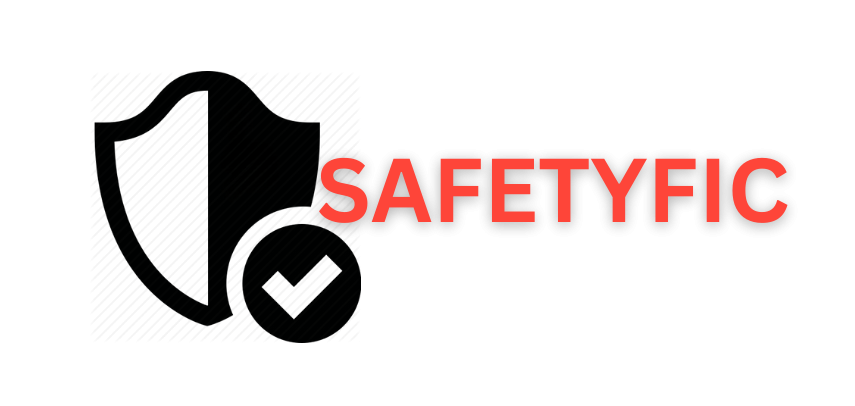When working in low-light or high-traffic environments, visibility is essential for safety. Adding reflective tape to a safety jacket is a simple yet effective way to enhance visibility and ensure the wearer stands out. This guide will walk you through the process of how to attach reflective tape to a safety jacket, ensuring both durability and functionality.
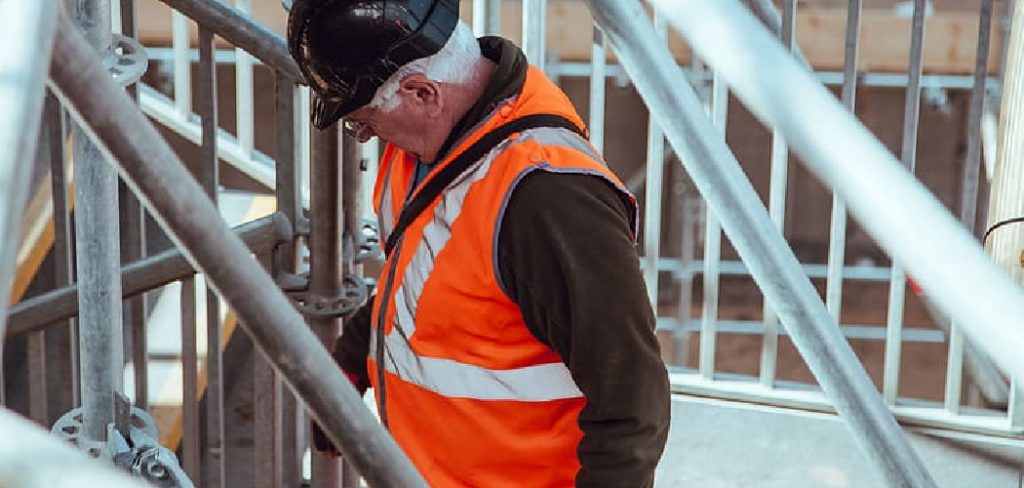
Importance of Reflective Tape for Safety Jackets
Reflective tape plays a vital role in improving the safety of individuals working or traveling in low-light or high-traffic conditions. Its high-visibility properties enable workers, cyclists, and pedestrians to be easily spotted by drivers, significantly reducing the risk of accidents. The reflective material effectively bounces light back towards its source, such as car headlights, making the wearer highly visible even from a distance. This is especially important for nighttime or dimly lit environments where visibility is naturally compromised. Additionally, incorporating reflective tape into safety jackets ensures compliance with workplace safety standards in industries like construction, roadwork, and emergency services, where visibility can be a matter of life and death.
Types of Reflective Tape
When selecting reflective tape for safety jackets, it’s important to choose a type that suits the specific needs of the environment and activity. The most common types of reflective tape include the following:
Glass Bead Reflective Tape
This type of tape relies on microscopic glass beads embedded within the material to reflect light. It is cost-effective and widely used in various industries. While it offers decent reflectivity, its performance may diminish over time when exposed to harsh conditions.
Prismatic Reflective Tape
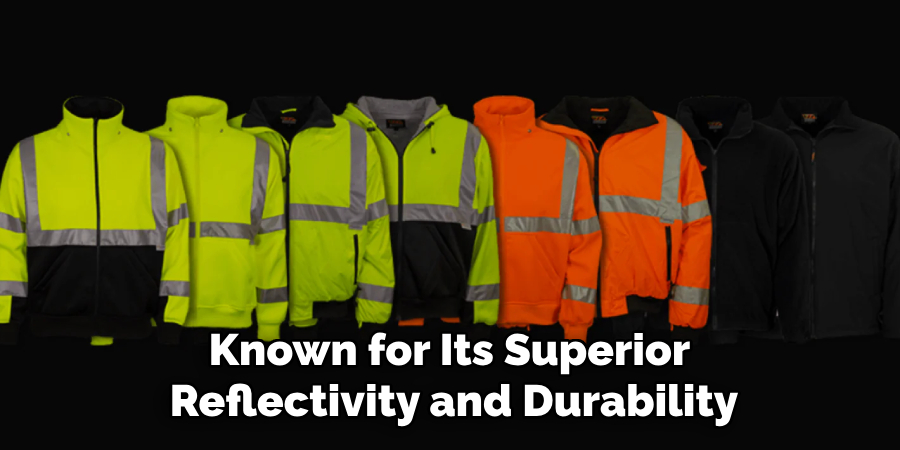
Known for its superior reflectivity and durability, prismatic reflective tape uses a series of small prisms to bounce light directly back toward its source. It is highly visible even from longer distances, making it ideal for environments that require high-intensity visibility.
Segmented Reflective Tape
Segmented reflective tape consists of small, flexible segments rather than a continuous strip. This design provides better breathability and movement, making it suitable for garments worn during physically demanding tasks or in warm climates.
Adhesive-Backed Reflective Tape
Featuring a self-adhesive backing, this tape is easy to apply on various surfaces, including fabrics. It is an excellent choice for temporary applications or for those who need a quick and simple installation process.
Sew-On Reflective Tape
Specifically designed for fabric integration, sew-on reflective tape is attached to garments through stitching. It provides long-lasting durability and is highly resistant to wear and tear, making it a preferred option for heavy-duty safety jackets.
10 Methods How to Attach Reflective Tape to a Safety Jacket
1. Using Iron-On Reflective Tape
One of the most common and convenient ways to attach reflective tape to a safety jacket is by using iron-on reflective tape. This method is ideal for lightweight fabrics such as polyester and cotton. To apply this tape, ensure the surface of the jacket is clean and dry. Place the reflective tape on the desired area, such as along the shoulders, sleeves, or chest. Set your iron to a medium heat without steam and press it onto the tape for 30 to 60 seconds, applying even pressure. Let it cool for a few minutes before checking to ensure the tape has adhered properly. This method offers a strong bond and is a quick solution.
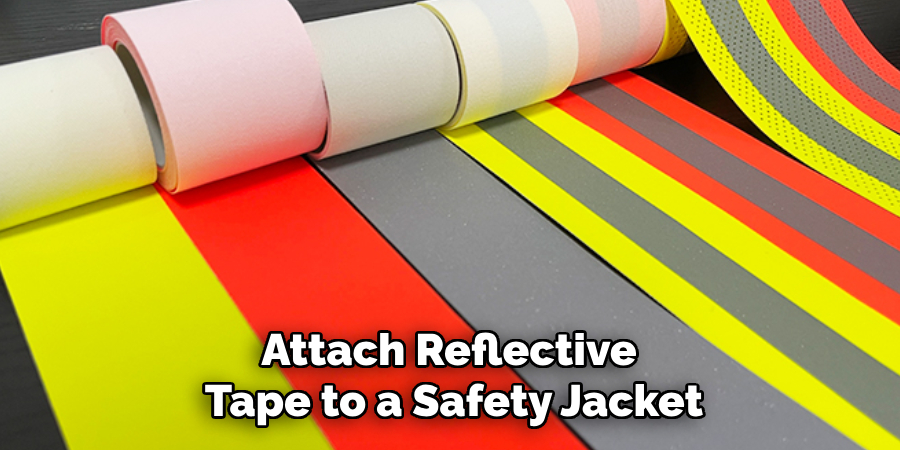
2. Using Sew-On Reflective Tape
For jackets made from heavier or more durable fabrics, sew-on reflective tape is a great option. This method is particularly effective for workwear or outdoor safety jackets that are subjected to heavy use. Start by positioning the reflective tape where you want it on the jacket. Using a sewing machine or a needle and thread, sew along the edges of the tape, making sure it is securely fastened to the fabric.
3. Applying Adhesive-Backed Reflective Tape
Adhesive-backed reflective tape offers a simple solution for quickly adding reflective strips to a jacket without any sewing or heat application. This type of tape has a strong adhesive backing, which allows it to stick directly to the fabric. Begin by cleaning the area of the jacket where the tape will be applied, ensuring it is free from dirt, dust, and moisture. Carefully peel off the backing from the tape and press it firmly onto the jacket, smoothing it out to eliminate air bubbles. This method works best for jackets made from synthetic fabrics and is a great option for temporary or emergency situations.
4. Using Reflective Tape with a Heat Press Machine
For those looking for a more industrial solution, a heat press machine can be used to apply reflective tape to a safety jacket. This method provides a professional, durable finish and is commonly used in custom apparel manufacturing. Start by positioning the reflective tape on the jacket and placing it under the heat press. Set the machine to the recommended temperature, which is typically between 300°F and 350°F, and apply pressure for 10 to 15 seconds. This method ensures that the tape adheres securely and creates a strong bond with the fabric.
5. Using Fabric Glue for Reflective Tape
For a no-sew, no-iron option, fabric glue can be used to attach reflective tape to a safety jacket. Fabric glue works well on a variety of fabrics, including cotton, polyester, and blends. Begin by cleaning the jacket’s surface and positioning the reflective tape where you want it. Apply a thin layer of fabric glue to the back of the tape, then press it onto the jacket. Hold it in place for a few minutes to allow the glue to bond with the fabric. Allow the glue to dry completely before using the jacket.
6. Using a Stapler for Temporary Application
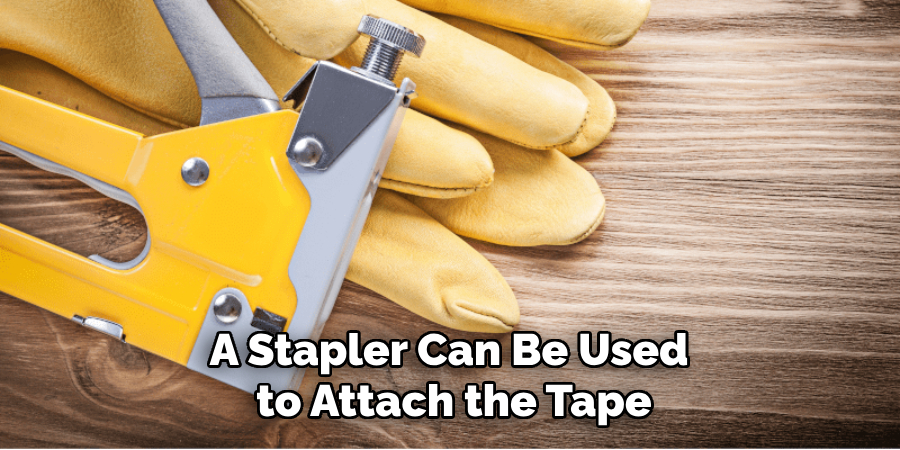
In situations where a temporary solution is needed, such as when adding reflective tape for a single event or for emergency use, a stapler can be used to attach the tape. This method is not as durable or professional as others, but it can be effective in a pinch. Position the reflective tape on the jacket and use a stapler to secure it in place. Be sure to staple through the edges of the tape to avoid damaging the reflective surface. While this method is fast, it should be used sparingly, as the staples can potentially cause irritation or damage to the fabric.
7. Using Velcro Strips with Reflective Tape
For a more flexible and removable solution, consider attaching reflective tape to a safety jacket using Velcro strips. This method allows you to add and remove the tape as needed, which can be useful in situations where you may want to adjust the visibility of your jacket based on the environment. To apply, sew or glue Velcro strips to the jacket where you want the reflective tape. Attach the reflective tape to the corresponding Velcro strips. This solution is particularly useful for jackets that need to be frequently cleaned or for individuals who require variable visibility levels throughout the day.
8. Applying Reflective Tape Using Fabric Tape
Fabric tape is a strong, adhesive-backed option that can be used to attach reflective strips to a jacket. Unlike regular adhesive tape, fabric tape is designed to bond with textiles, providing a more secure attachment. Begin by cleaning the area where you want to apply the reflective tape. Then, cut the fabric tape to the desired length and press it firmly onto the jacket. This method is ideal for quick fixes or for jackets that need temporary visibility enhancements. Fabric tape also provides a level of flexibility, as it can be easily removed or repositioned if necessary.
9. Using Stitch Witchery for Temporary Attachments
Stitch Witchery is a fusible bonding web that can be used to temporarily attach reflective tape to a safety jacket. This method is particularly useful when you don’t have access to an iron or sewing machine but still need to create a bond between the tape and fabric. To use Stitch Witchery, place the reflective tape on the jacket and cut a piece of Stitch Witchery to match the size of the tape. Position the bonding web between the tape and fabric and apply heat with an iron. The web will fuse the reflective tape to the jacket without requiring sewing.
10. Using a Combination of Methods for Enhanced Durability
For jackets that need to withstand heavy wear and frequent washing, a combination of methods can be used for enhanced durability. For example, you can apply adhesive-backed reflective tape and then sew around the edges for added security. Alternatively, using both fabric glue and an iron-on method can create a strong bond that holds up under challenging conditions. Combining different techniques ensures that the reflective tape remains securely attached to the jacket, even in high-activity environments where frequent movements or exposure to rough surfaces may cause wear.
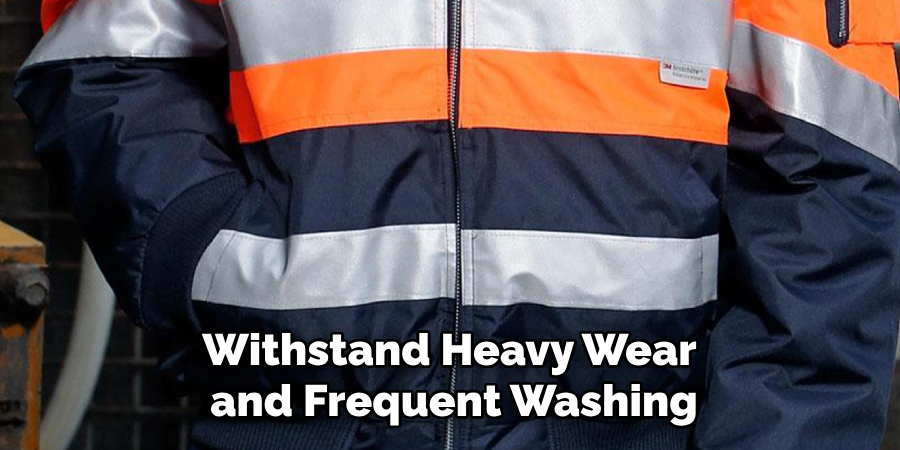
Conclusion
Attaching reflective tape to a safety jacket is a crucial step in improving visibility and ensuring safety in low-light or high-risk environments. Depending on the fabric type, durability requirements, and personal preference, there are several methods to choose from. Thanks for reading, and we hope this has given you some inspiration on how to attach reflective tape to a safety jacket!
About
Safety Fic is a distinguished figure in the world of Diy design, with a decade of expertise creating innovative and sustainable Diy solutions. His professional focus lies in merging traditional craftsmanship with modern manufacturing techniques, fostering designs that are both practical and environmentally conscious. As the author of diy, Safety Fic delves into the art and science of Safety Fic-making, inspiring artisans and industry professionals alike.
Education RMIT University
(Melbourne, Australia) Associate Degree in Design (Safety Fic) Focus on sustainable design, industry-driven projects, and practical craftsmanship. Gained hands-on experience with traditional and digital manufacturing tools, such as CAD and CNC software.
Nottingham Trent University
(United Kingdom) Bachelor’s in diyfastly.com and Product Design (Honors) Specialized in product design with a focus on blending creativity with production techniques. Participated in industry projects, working with companies like John Lewis and Vitsoe to gain real-world insights.
Publications and Impact
In diy, Safety Fic his insights on indoor design processes, materials, and strategies for efficient production. His writing bridges the gap between artisan knowledge and modern industry needs, making it a must-read for both budding designers and seasoned professionals.
